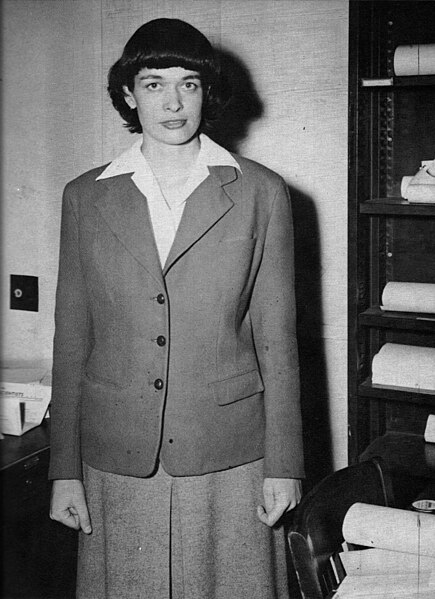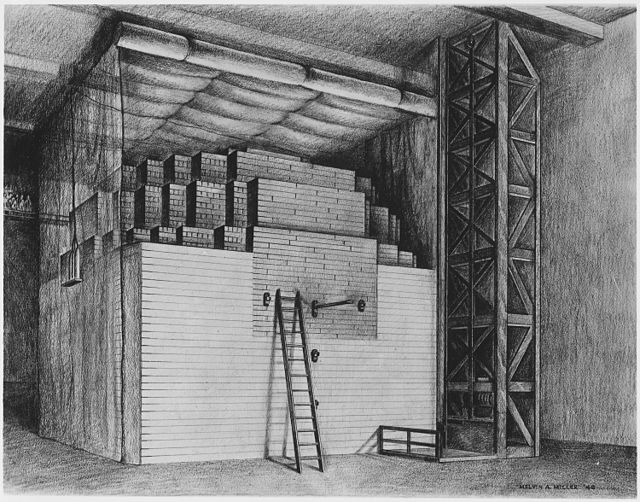Leona Harriet Woods, later known as Leona Woods Marshall and Leona Woods Marshall Libby, was an American physicist who helped build the first nuclear reactor and the first atomic bomb.
Woods at the University of Chicago in 1946
Chicago Pile-1 (CP-1) was the world's first artificial nuclear reactor. On 2 December 1942, the first human-made self-sustaining nuclear chain reaction was initiated in CP-1 during an experiment led by Enrico Fermi. The secret development of the reactor was the first major technical achievement for the Manhattan Project, the Allied effort to create nuclear weapons during World War II. Developed by the Metallurgical Laboratory at the University of Chicago, CP-1 was built under the west viewing stands of the original Stagg Field. Although the project's civilian and military leaders had misgivings about the possibility of a disastrous runaway reaction, they trusted Fermi's safety calculations and decided they could carry out the experiment in a densely populated area. Fermi described the reactor as "a crude pile of black bricks and wooden timbers".
Chicago Pile-1
Pupin Hall at Columbia University
One of at least 29 experimental piles that were constructed in 1942 under the West Stands of Stagg Field. Each tested elements incorporated into the final design.
Carpenter Augustus Knuth, in the process of jointing a wooden block for the timber frame





